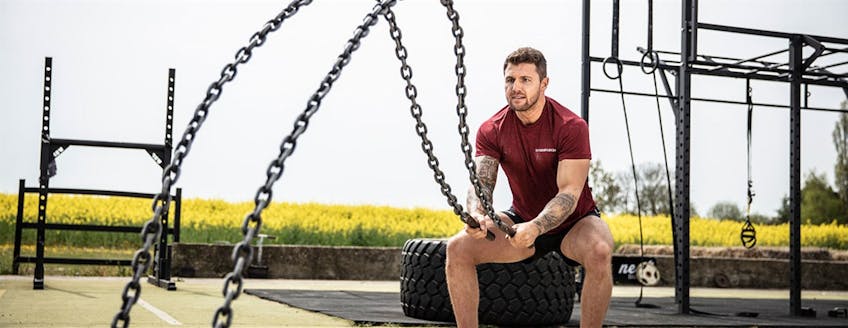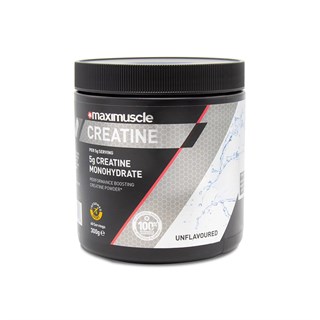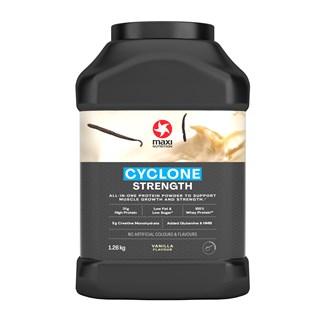Are you strong enough for your sport? Expert Scientist Rebecca Williams explains the importance of strength training for performance and outlines how you can measure your strength gains in and out of the lab.
Why is strength training important?
From supporting our mobility as we age to powering athletic performance, building strength training into your weekly workout regime can be a smart move. Many types of exercise rely on an element of strength to cope with the forces associated with training, even endurance type activities such as marathon running need strength. Keeping track of strength gains with regular testing is an essential part of a coach’s armoury, as it can inform of opportunities to improve functional ability and mobility of athlete’s bodies. However you don’t have to be training at an elite level to take strength seriously.
How do elite athletes test their strength?
Elite athletes often have the luxury of assessing their strength in the lab, allowing access to state of the art tools and techniques. There are numerous ways to test an athlete’s strength to assess training status, and to develop personalised training recommendations.
-
Isokinetic Dynamometry
An isokinetic dynamometer is a piece of equipment that allows scientists to break down the power components of particular joints, and therefore the muscle groups required for movement, specific to an athlete’s performance. Results of this test could provide an indication of power imbalances between muscle groups, which once redressed could reduce the risk of injury, and improve efficiency of movement and transfer of power. It could also be used as an on-going monitoring tool to assess gains or reductions in power across a training season when tests are repeated.
-
Free Weights & Force Platform
Scientists are able to firstly observe weight lifting technique and using a camera system (from three angles) to record, replay and highlight any areas for improvement. The addition of a force platform can help to emphasise any technique or mobility issues, e.g. helping a cyclist improve his/her technique during a weighted squat to maximise strength gains.
-
Jump Testing
Using an ‘Opto Jump’ system, scientists can measure the reactive strength of an athlete when performing a vertical jump, to evaluate explosive force. This can be particularly useful for sprinters, triple jump and high jump. This system can be adapted to suit many scenarios of testing and on-going monitoring.
As athletes progress through their training, they can monitor their strength gains by retesting at least 6 weeks later.
Strength testing at home
For most of us, we won’t have access to high performance testing techniques and equipment found in the lab. However, there are a number of at home or at the gym ways you can test your strength, whether you’ve decided to get back into shape, or simply want to improve your athletic ability. Measuring strength before you start an exercise program can be a great way to track your progress, reassessing your results every 6 weeks.
Press Ups
Strong arms and upper body strength can help you to transfer force, and aid performance in a variety of sports from tennis to boxing.
The Test

- Assume a push up position, whether that be with your body straight from head to ankles, or with your knees touching the floor.
- Complete as many press-ups as possible with no rest until you are unable to continue with good form.
- Record the number of press ups completed, and see if you can complete more in 6 weeks as your strength improves with training.
Plank
Having a strong core can help stabilise your body in everything you do, from running across a football pitch to holding your form during a golf swing.
The Test
- With your body in a straight line from your head to your ankles, balance yourself on your tiptoes and hands, maintaining a straight elbow.
- Contract your abs and hold the position for as long as you can.
- Record the time, and aim to hold the position for longer next time you measure your core strength.
Standing Jump Test
This test can not only be a useful way to measure the strength of several muscle groups throughout the body, but it can also gauge power, which is a key component of many sports such as jujitsu and hurdling. The stronger you become the more force you will be able to generate and the further you will jump.
The Test
- Choose a flat, stable surface and stand with your toes behind a starting line.
- Dip your knees and swing your arms to propel yourself forward.
- Measure the distance jumped with the help of a friend.
Maximising your adaptation
Support strength training and development by feeding your muscles with the right nutrients after training. The science suggests that a 20 – 40 g protein feed, preferably from good quality animal sources such as meat, fish or dairy, every 4 hours throughout the day can support muscle development.
To learn more about what to eat to support your muscle development goals, take a look at our Nutrition Tips for Strength and Power article.
With appropriate training and nutritional support, you should see strength development from one assessment to the next, helping you to progress in your sport or chosen activity.

















